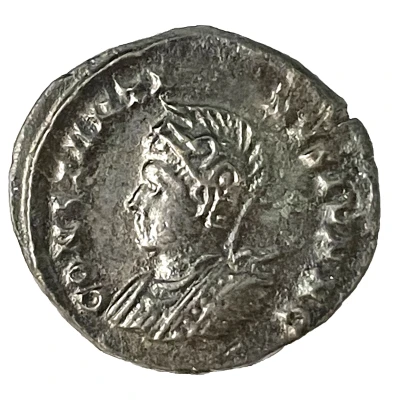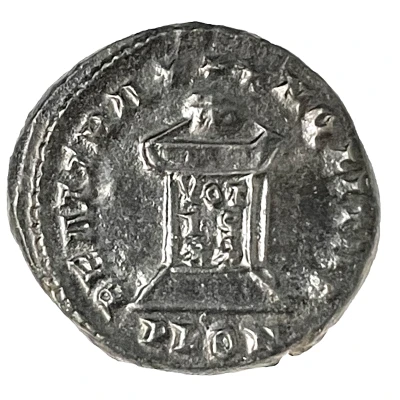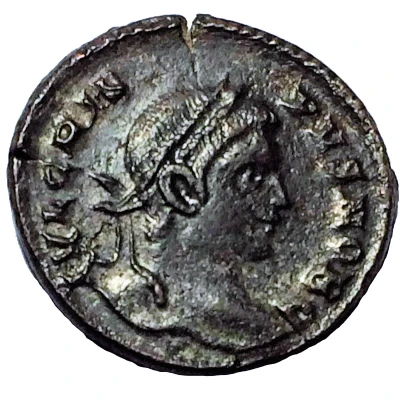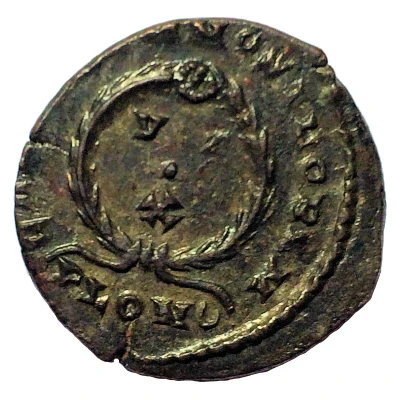Nummus - Constantinus II Helmeted, cuirassed, left; BEATA TRANQLITAS, PLON; Londinium
| Bronze | 2.41 g | 19.16 mm |
| Issuer | Rome › Roman Empire (27 BC - 395 AD) |
|---|---|
| Emperor | Constantine I (Flavius Valerius Constantinus) (306-337) |
| Type | Standard circulation coin |
| Years | 323-324 |
| Value | Nummus (1⁄7200) |
| Currency | Solidus, Reform of Constantine (AD 310/324 – 395) |
| Composition | Bronze |
| Weight | 2.41 g |
| Diameter | 19.16 mm |
| Shape | Round (irregular) |
| Technique | Hammered |
| Orientation | Coin alignment ↑↓ |
| Demonetized | Yes |
| Updated | 2024-10-05 |
| Numista | N#374057 |
|---|---|
| Rarity index | 100% |
Reverse
Globe on inscribed altar, three stars above.
Mintmark in exergue.
Script: Latin
Lettering:
BEATA TRA-NQLITAS
VOT / IS / XX
PLON
Unabridged legend:
Beata Tranquillitas.
Votis Vicennalibus.
Translation:
Blessed tranquillity.
Prayers for twenty years of rule.
London.
Interesting fact
The Nummus - Constantinus II coin was part of a large-scale currency reform implemented by Emperor Constantine the Great in the early 4th century AD. The reform aimed to standardize the Roman currency and reduce inflation, which had become a significant problem in the empire. The Nummus coin was introduced as a new denomination, and it became the most widely used coin in the empire. Its design featured the image of the emperor, Constantine II, wearing a helmet and cuirass, symbolizing his military power and leadership. The coin's reverse side featured the goddess Peace (Beata Tranquitas) standing on a prow, holding a scepter and a branch, representing the peace and prosperity that Constantine's rule brought to the empire. The Nummus coin was minted in large quantities and was used for everyday transactions, making it an integral part of the Roman economy during that time.



